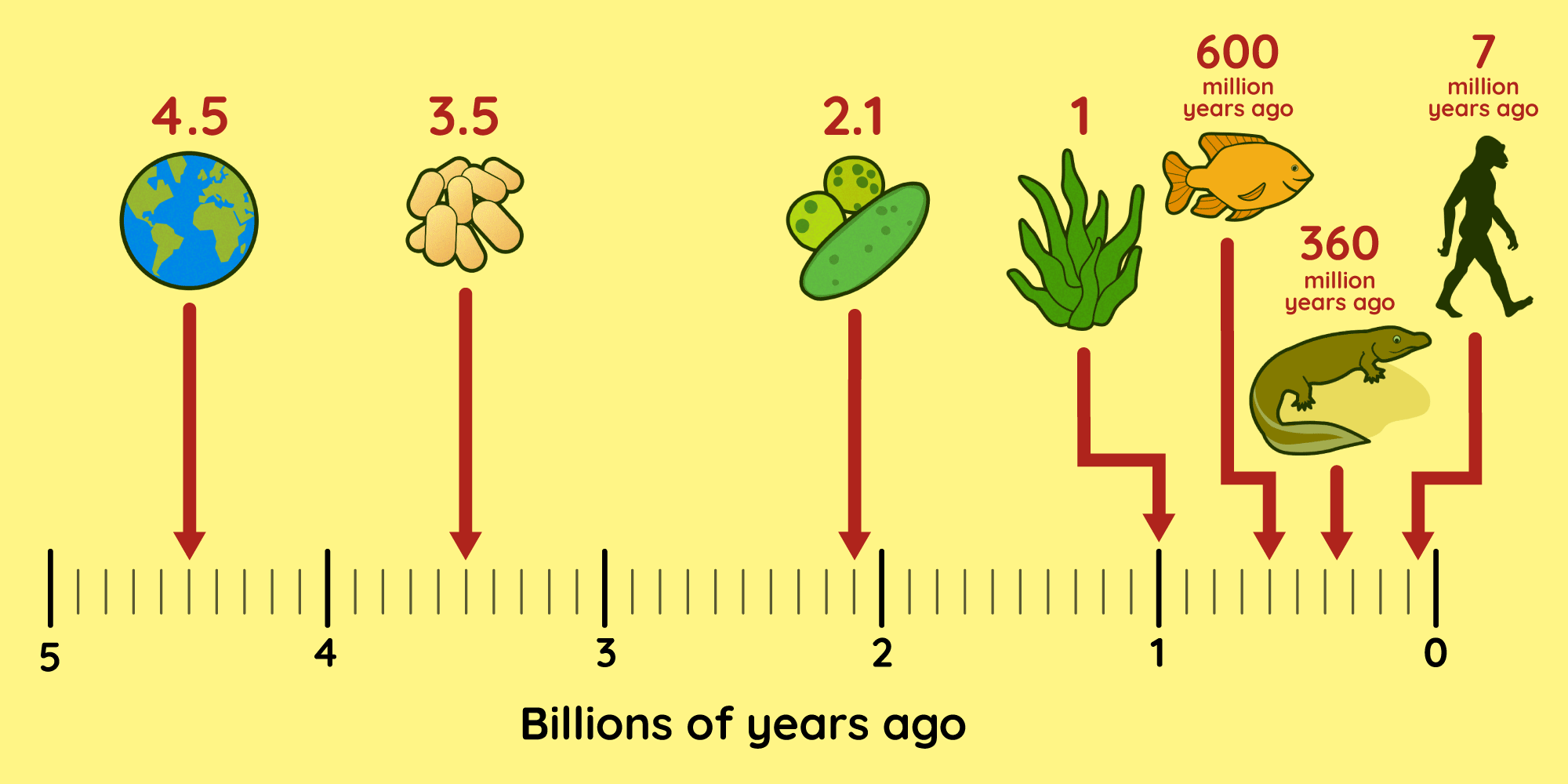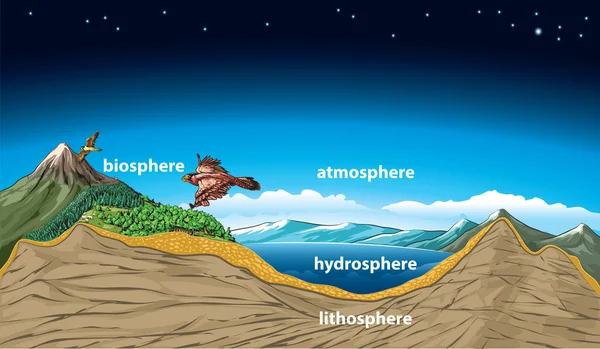Our awareness of current threats to biodiversity and prospects for future survival arises in part because we know of animals and plants that have become extinct in the past. News media feed an appetite for tales of dinosaurs, mammoths, living fossils and missing links.
The biodiversity of Earth is not a static phenomenon. Processes that work over huge time scales (hundreds and thousands of millions of years, called deep time) have spawned present-day species and ecosystems that are conspicuously different from those of the past, yet life nowadays is intimately linked to the past by evolutionary lineages. Everything has an ancestor. Present-day species may be different but many lifestyles they lead are recognisably similar to those of extinct creatures. Many habitats are similar. Some were changed and some were dead but overall the diversity of life around us now is simply the continuation of the biodiversity of the past.
Organisms, of past or present, in key respects, they are all alike. Such as:
- All organisms consist of same kinds of substances, put together according to same laws that govern matter and energy, which they must obtain from environment.
- All organisms sense and respond to changing conditions in environment.
- They all grow and reproduce, based on instructions contained in their DNA.
What is life?
Life is an outcome of ancient events by which non-living materials become assembled into first living cells. It is a way of capturing and using energy and raw materials, a way of sensing and responding to changes in environment and a capacity to reproduce, grow and develop.
Life evolves meaning, details in body plan and functions or organs can change through successive generations.
- Th earth was created 4600 million years back & 1st life appeared 3800 million years ago.
- So far 1.5 million living spp. & 0.3 million fossil spp. identified and described.

To understand life nowadays, we need to know its history. To conserve biodiversity into the future we need to check for any lesson from the past. We need to know if extinctions now are qualitatively different from natural losses throughout the history of life, comparing the types of diversity currently at risk versus those wiped out in the past. We need to know if current losses are quantitatively different, if more species are being lost, at a faster or slower rate, over a larger or smaller area. The history of biodiversity provides insights, warnings and reassurance.
History of the earth may help us to know –
- Causes of extinction.
- Vulnerability of spp.
- Useful tactics, strategies of conservation by studying ancient spp., survived despite of all threats.
Biodiversity’s future based on knowing past.
Unity and diversity
Immense diversity in the world of life, millions of different organisms inhabit in the Earth and many millions more lived and became extinct over past 3.8 billion years back.
Each kind of organism unique in some of its traits i.e., in some aspects of its body plan, body function and behavior.
Some Basic Concepts to Understand Biodiversity
Biosphere

Biosphere is the portion of earth where all living organisms are present and interact with each other and also with the surrounding environment. Its –
(i) upper limit 9000 m above MSL (Mean Sea Level) &
(ii) lower limit 10000 m below sea.
Requirements for Biosphere
Ample solar energy, liquid water & places where liquid, solid & gas all meet seem to be the requirements for biosphere to exist where biological cycles of H2O, O2, mineral, N, C, etc. function.
Interaction between organisms of biosphere and environment performs via ecosystem functioning.
Ecosystem
Any area that includes all organisms interacting with physical environment where flow of energy leads to clearly defined pathways, trophic structure, biotic diversity & material recycles called ecosystem e.g., coral reef, tropical rainforest, etc. (Tansley, 1935).
Genus and Species
Species are kinds of plants or animals in which all members are related as they are descendants from same ancestor/s; should look alike in fundamental structure and other characters maintained in nature through out innumerable generations; also interbred to produce fertile offspring.
Genus are the group of similar & related spp.. E.g., white oak, red oak-all make up the genus Quercus, (white Oak is Q. alba and red oak is Q. rubra).
References
- Biodiversity & Conservation (2nd edition) by Michael J. Jeffries.
- Fundamentals of Conservation Biology (3rd edition) by Malcolm M. Hunter Jr. & James P. Gibbs.
Written by
Syeda Nusrat Jahan Mili & Abulais Shomrat
 Plantlet The Blogging Platform of Department of Botany, University of Dhaka
Plantlet The Blogging Platform of Department of Botany, University of Dhaka






The point of view of your article has taught me a lot, and I already know how to improve the paper, thank you.